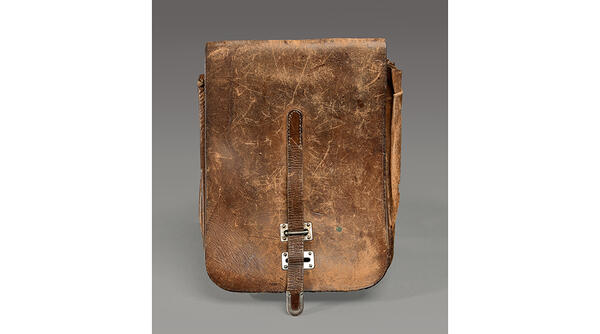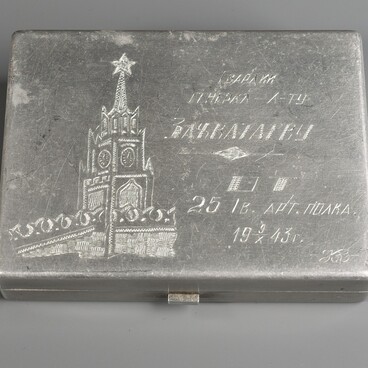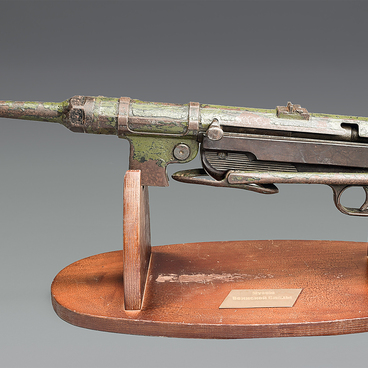In the map case, the commanders carried working papers and writing implements. It was also named a mapboard (‘planshet’) or plane table (‘planshetka’).
Some researchers consider a sabretache the map case’s prototype, from the French or German ‘tache’ (tache, tasche), which is translated as a ‘bag’. In the 17-19th centuries, this was the name of the cavalry soldiers’ leather bag which was an important part of the hussars outfit.
The map case with the double-headed eagle image was used in the Russian Imperial Army during the Russo-Japanese war. There are drawings preserved from 1912 showing an officer’s map case very similar to modern ones.
In the Armed Forces of the USSR, the map case was a part of the Red Army commander’s outfit, introduced by order of the Revolutionary Military Council of the USSR as of September 1, 1923.
From January 1932, the Red Army commanders were supplied with the map cases. Information on the produced map cases quantity was classified, as by these data it was possible to figure out the number of the army commanders.
Production of web-tarpaulin (kirza) map cases was established in the USSR just before the Great Patriotic War.
Such map case was designed only for the fighting troops’ commanders and only for wartime. During wartime, it was prohibited to use the map case off service. A civilian could get into trouble with the map case: he would have to explain the presence of this item when bumping into a patrol.
After World War II, children often used the map cases as school bags. In 1973, the Minister of Defense of the USSR issued an order on military uniforms, the appendix of which stated that the map case should be worn with field and everyday summer and winter uniforms, on the belt worn on the right shoulder over the military uniform.
The exhibited map case belonged to Leonid Rakhmanov, the writer and war correspondent.
He became very famous for his ‘The Deputy of the Baltic’ movie script, released in 1936.
In 1937, Rakhmanov wrote the play ‘Restless Old Age’, which was staged in more than 400 theaters of the USSR, including the Gorky Moscow Art Theater stage.
Some researchers consider a sabretache the map case’s prototype, from the French or German ‘tache’ (tache, tasche), which is translated as a ‘bag’. In the 17-19th centuries, this was the name of the cavalry soldiers’ leather bag which was an important part of the hussars outfit.
The map case with the double-headed eagle image was used in the Russian Imperial Army during the Russo-Japanese war. There are drawings preserved from 1912 showing an officer’s map case very similar to modern ones.
In the Armed Forces of the USSR, the map case was a part of the Red Army commander’s outfit, introduced by order of the Revolutionary Military Council of the USSR as of September 1, 1923.
From January 1932, the Red Army commanders were supplied with the map cases. Information on the produced map cases quantity was classified, as by these data it was possible to figure out the number of the army commanders.
Production of web-tarpaulin (kirza) map cases was established in the USSR just before the Great Patriotic War.
Such map case was designed only for the fighting troops’ commanders and only for wartime. During wartime, it was prohibited to use the map case off service. A civilian could get into trouble with the map case: he would have to explain the presence of this item when bumping into a patrol.
After World War II, children often used the map cases as school bags. In 1973, the Minister of Defense of the USSR issued an order on military uniforms, the appendix of which stated that the map case should be worn with field and everyday summer and winter uniforms, on the belt worn on the right shoulder over the military uniform.
The exhibited map case belonged to Leonid Rakhmanov, the writer and war correspondent.
He became very famous for his ‘The Deputy of the Baltic’ movie script, released in 1936.
In 1937, Rakhmanov wrote the play ‘Restless Old Age’, which was staged in more than 400 theaters of the USSR, including the Gorky Moscow Art Theater stage.



